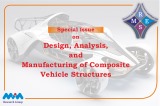Technical Note
Fatigue behavior of flush reinforced welded hand-holes in aluminum light poles
Cameron R. Rusnak, Craig C. Menzemer
Auburn Science and Engineering Center (ASEC 210), Department of Civil Engineering, The University of Akron, Akron, Ohio, USA
Keywords
Abstract
Fatigue test;
Flush welded aluminum hand-hole details;
Fatigue comparison;
Design S-N curve;
High cycle fatigue
Hand-holes are used in welded aluminum light poles which provide access to electrical wiring for both maintenance and installation. Light poles are usually slender and subjected to cyclic loading due to the response from wind. In the field, localized fatigue cracking around hand-holes has been observed but few studies have focused on the resistance of welded aluminum hand-holes. In this study, three-point bending fatigue tests were conducted on full-scale light poles samples. Specimens were constructed with a “flush” hand-hole utilizing reinforcement placed on the inside of the tube, with the handhole located 18 in from the base. Five of these poles, each containing two separate details were tested. Among the ten details that were tested, eight failed as a result of fatigue cracking and the resulting data is compared to current design S-N curves of the Aluminum Design Manual (ADM). A finite element model was created to help understand the local stresses around the hand-hole. this study, the estimation of shear force for blind shear ram type blowout preventer was investigated by using Finite Element Method (FEM). So, the effect of the blowout preventer working condition on shear force requirement for shear operation could be accurately approximated by simulating the entire process, and ram geometry could be optimized to reduce force and energy used to shear the tube by plastic deformation.
© 2021 MIM Research Group. All rights reserved.

